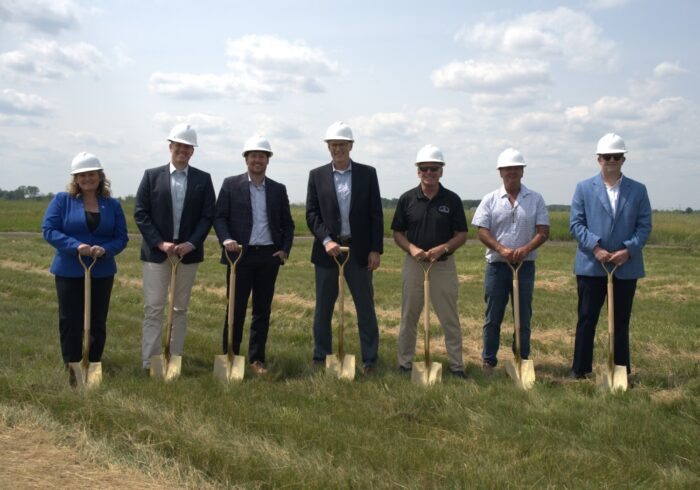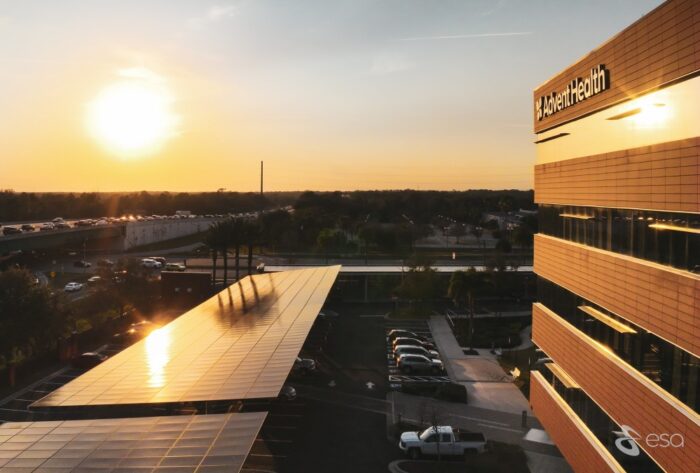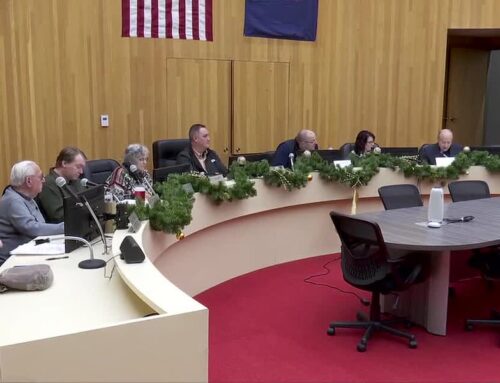California approves world’s largest solar + storage plant
June 23, 2025
- $2 million in community investments over the next decade starting with a $320,000 commitment to Centro La Familia Advocacy Services, a nonprofit supporting crime victims, family wellness, and civic engagement in rural communities.
- More than 2,000 prevailing-wage construction jobs to support the local workforce throughout the construction period, which will last from 1.5 to 3 years.
- An estimated $169 million in economic benefits to the local area over the project’s lifetime, estimated at 35 years.
“Today’s clean energy projects must do more than just deliver megawatts. They should create value in the communities where they’re built,” said CEC Commissioner Noemí Gallardo. “This project exemplifies a community-focused approach that advances the state’s energy goals while creating benefits for local workers and residents.”
Cadiz Inc. has entered into a memorandum of understanding (MOU) with UK-based Hoku Energy Ltd. and its affiliates to develop a major clean energy campus at Cadiz Ranch in California’s Mojave Desert. The agreement with Hoku represents the second prospective land lease for clean energy development that the Cadiz has entered within the past year and furthers the company’s commitment to sustainable development of its land and water assets.
The MOU provides Hoku Energy with a three-year exclusive option to develop the project on more than 10,000 acres at Cadiz Ranch. The Hoku project could include green hydrogen production facilities, large-scale renewable and low-carbon power generation, large-scale battery storage facilities, and integrated digital infrastructure, such as data centers, on the leased property or integrated with facilities off the leased property.
Cool factor: With this agreement and other planned developments on the property, Cadiz Ranch is positioned to be one of the largest renewable energy campuses and green hydrogen production hubs in North America. The Cadiz property’s extensive infrastructure — including access to rail lines, water resources, and pipelines and pipeline corridors — makes it well suited for large-scale, integrated renewable energy and data center development. The agreement with Hoku complements Cadiz’s development of its flagship water supply and storage project, the Mojave Groundwater Bank, and follows Cadiz’s 2024 agreement with RIC Energy to develop up to 3,000 acres for green hydrogen production.
“This agreement with Hoku Energy is the capstone of our long-term land use strategy,” said Susan Kennedy, chair of Cadiz Inc. “Hoku Energy’s vision aligns with our mission to support sustainable, scaled development of critical energy and water infrastructure in California and the Southwest.”
Invenergy has begun construction on the 240 MW Pleasant Prairie Solar Energy Center in Franklin County, Ohio. Located in Galloway, Ohio, just outside Columbus, the project represents an expected $230 million investment in the county over the life of the project, through new tax revenue and lease payments. Pleasant Prairie has also partnered with Ohio State University’s Battelle Center for Science, Engineering and Public Policy to contribute to the education of the next generation of energy leaders.
Construction on the facility will continue through early 2027 when Pleasant Prairie Solar is expected to begin commercial operations. Invenergy has partnered with Blattner, the country’s leader in renewable energy engineering, procurement and construction, on the project’s construction. The project is expected to create up to 300 jobs during peak construction and employ three permanent staff once operational.
Invenergy celebrated this milestone with a groundbreaking event at the project site on June 10. The event included remarks from Invenergy’s Mick Baird, project landowner Squire Galbreath, and Brittany Rogers from Illuminate USA. A reception was held after the groundbreaking at the Darby House, located on the historical Darby Dan Farm, near the Pleasant Prairie project site.

Cool factor: Pleasant Prairie will be powered by U.S.-made solar panels produced at Illuminate USA, an advanced solar panel manufacturing company majority-owned by Invenergy, located in Pataskala, Ohio. Illuminate USA panels are also being used at other Invenergy solar facilities in Ohio, including Hardin III Solar, already in operation, and Cadence Solar, currently under construction.
“High-quality solar manufacturing is thriving in Ohio, thanks to our team in Pataskala and projects like Pleasant Prairie which put our panels to work across the region,” said Brittany Rogers, chief human resources office at Illuminate USA.
San José Clean Energy (SJCE) is expanding its award-winning Solar Access Program the construction of a new 2 MW, 8.5-acre solar power plant. SJCE celebrated the ribbon-cutting of West Tambo Clean Power II with developer Renewable America LLC and owner/operator Radial Power in Livingston, California.
“Every San José resident deserves access to affordable, renewable energy regardless of income or the type of home they live in,” said Mayor Matt Mahan. “Thanks to this new solar power plant and the leadership of San José Clean Energy, we’re not only reducing emissions, but we’re also lowering bills for families who need it most. This is exactly the kind of smart, equitable investment that moves San José forward.”
West Tambo Clean Power II features solar tracking technology that increases energy output by following the sun throughout the day. This boost in efficiency allows the program to serve an additional 150 customers.
Cool factor: The SJCE Solar Access Program provides 100% renewable energy to pollution-burdened, lower-income residents across San José at a 20% discount. While serving more than 800 customers since its launch in 2021, the program is set to expand to more than 1,000 customers over the next year thanks to the new solar power plant in Merced County and increased energy capacity, funded by the California Public Utilities Commission (CPUC). The program expansion was made possible in part because of the CPUC’s recent decision in the proceeding for the Disadvantaged Communities – Green Tariff, Community Solar Green Tariff, and Green Tariff Shared Renewables Programs, supporting clean energy programs in disadvantaged communities.
The Solar Access Program was awarded the Beacon Leadership & Innovation Award from the Institute for Local Government for its collaborative and equitable climate resilience initiatives and received a commendation from the San José City Council.
Terrasmart has partnered with ESA to complete a canopy solar project for AdventHealth’s campus in Altamonte Springs, Florida. The 3 MW photovoltaic system is now powering approximately a third of the corporate campus’s electricity needs with solar energy. AdventHealth is projected to save more than $4.6 million in energy costs over the life of the system. The canopy project will produce an estimated 4,200 MWh of clean energy each year, aiding AdventHealth’s goals to cut carbon emissions in half by 2030 and achieve net zero emissions by 2050.

Cool factor: As one of the largest privately owned solar arrays in Florida, the installation included 7,500 solar panels across the rooftops of four buildings, two multistory garages, covered walkways, and parking canopies. The project required Terrasmart to produce three separate designs — two for canopies on parking garages and one for a surface lot. The project also added 62 electric vehicle charging ports and incorporated shaded parking for hundreds of surface parking spots for staff and visitors.
“Installing a multi-canopy system in a populated area instead of an open field exemplifies the adaptability of photovoltaic design, and the continued growth potential of solar energy,” said Yury Reznikov, chief sales officer at Terrasmart.
Unlike wide-open fields where many solar projects are built, AdventHealth’s campus is in a populated area with limited access points, narrow roads, and a laydown yard three-quarters of a mile away from the primary worksite. Both Hurricane Milton and Hurricane Helene impacted the construction schedule and flooded the laydown yard, but the project was completed on a favorable revised schedule.
Tags:commercial and industrial,Community Solar,energy storage,utility-scale
Search
RECENT PRESS RELEASES
Related Post




